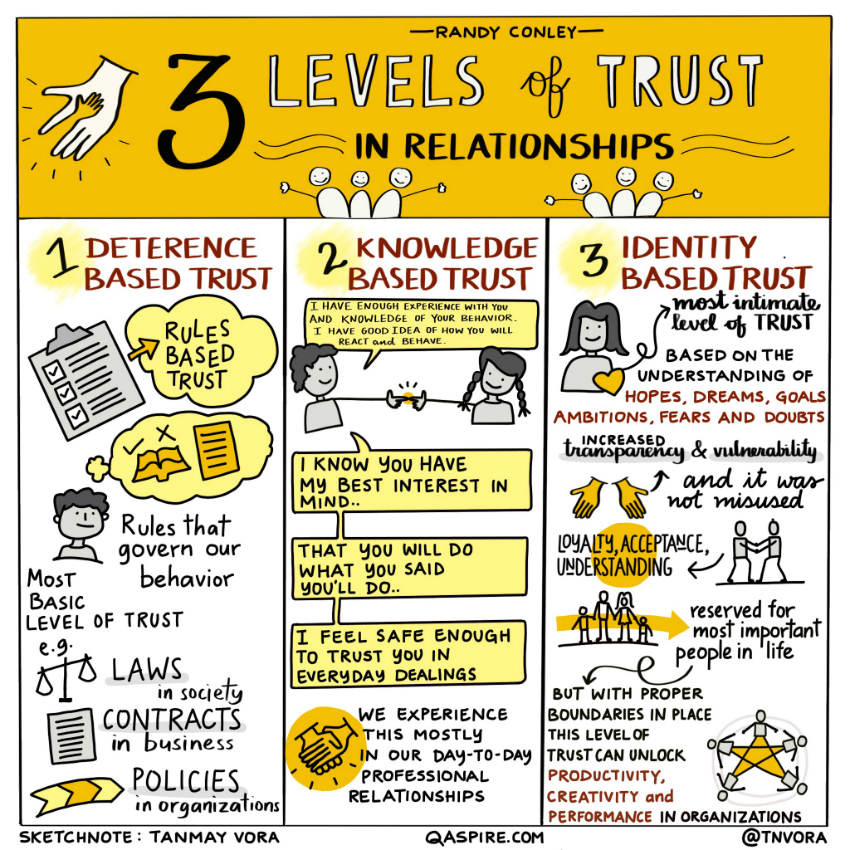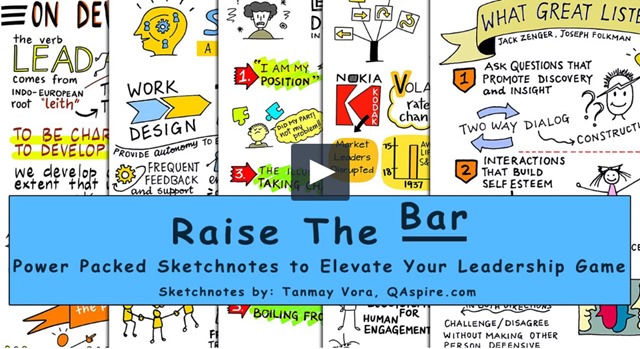Three Levels of Trust in Relationships
Tanmay Vora
A lot of people I meet use the expression, “Trust me…” or “Believe me…” in an attempt to build confidence. Do we trust them, just because they are asking us to?
Trust is not something you demand, it is something that you have to earn through clarity of intent (why), actions that support that intent (what) and most importantly take those actions with utmost integrity and human connection (how). And we have to do this consistently because trust is built one step at a time.
And unless people trust us, they would not care about our competence. Therefore, leaders have to truly connect before they can lead.
We commonly use the word ‘trust’ in business environment but how often do we care about what kind of trust we are expecting from others? I learned about three levels of trust through this excellent post by Randy Conley.
Also Read: Employee Engagement: 4 Basic Human Needs (by Randy Conley)
Let’s say, a new member joins your team and during induction process, the new team member understands the governing processes, explicit policies and implicit expectations while also being aware of the consequences. Through processes, we know that new member will not be able to violate the essentials. Conley defines this as deterrence based trust.
As we work with the new team member through a longer period, seeing them deliver the outcomes, we build our experience with them. At this point we know that they are aligned to the same intent and we have sufficient knowledge about their behavior and reactions. Conley defines this as knowledge based trust.
But most intimate level of trust is what Conley defines as “Identity” based trust. This is way deeper than just knowing a person. This is about having deep connection with intrinsic motivations of an individual. We understand them at a level of their hopes, aspirations and fears. And yet, we don’t misuse them. We give them the space to be their most authentic selves.
Most effective mentoring relationships I have seen – whether they are between parents and their kids, teachers and their students or between professionals – have this depth of trust.
Conley argues that this kind of trust is reserved for most important people in life, but with right boundaries, building this trust at workplace unlocks creativity and productivity.
Here is a quick sketchnote of ideas presented in Conley’s post.
So, next time you end up using the word “Trust”, do a quick check on what level of trust you are referring to.
Updated: Visual Leadership Pack of 58+ HD Sketchnotes
If you liked the sketchnote summary above, check out the Visual Leadership Pack of HD Sketchnotes – a compilation of high-resolution sketchnotes with 68+ powerful (and timeless) ideas to elevate your leadership and learning game.
Related Resources at QAspire


Tanmay,
Exactly my point trust is not something you demand.